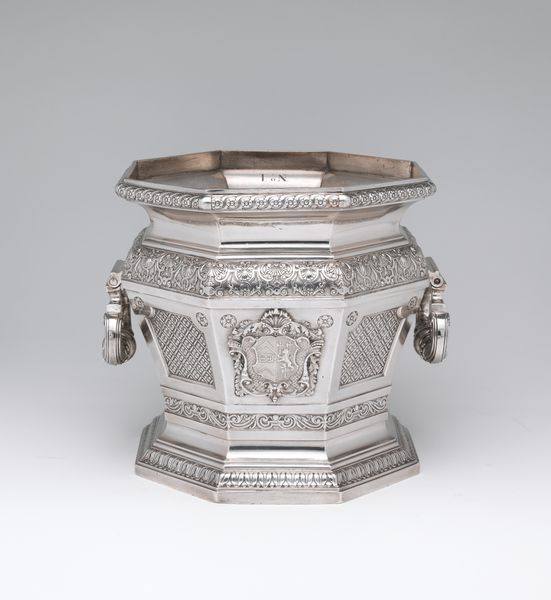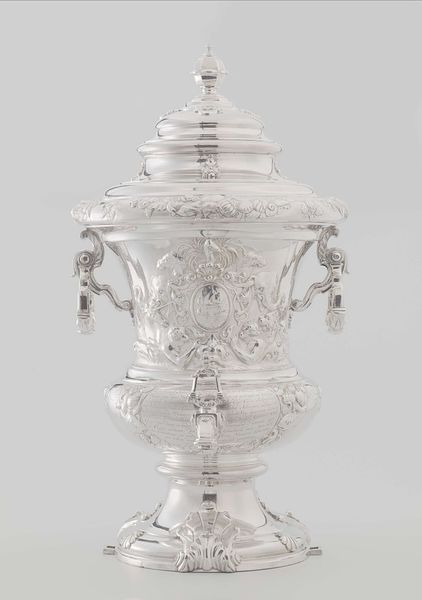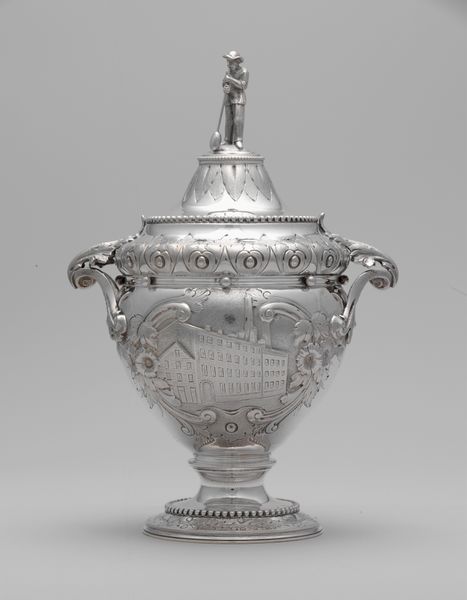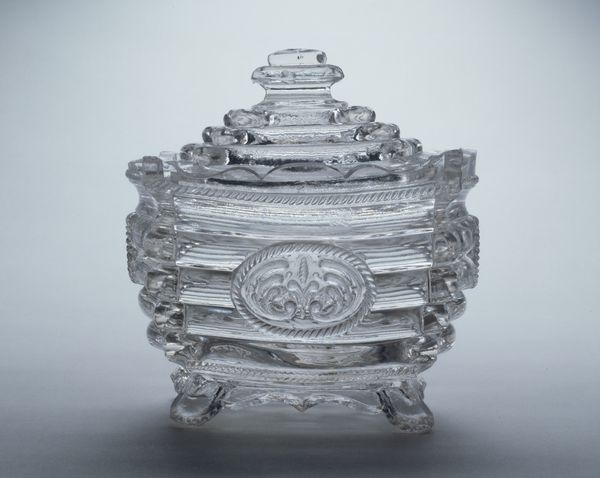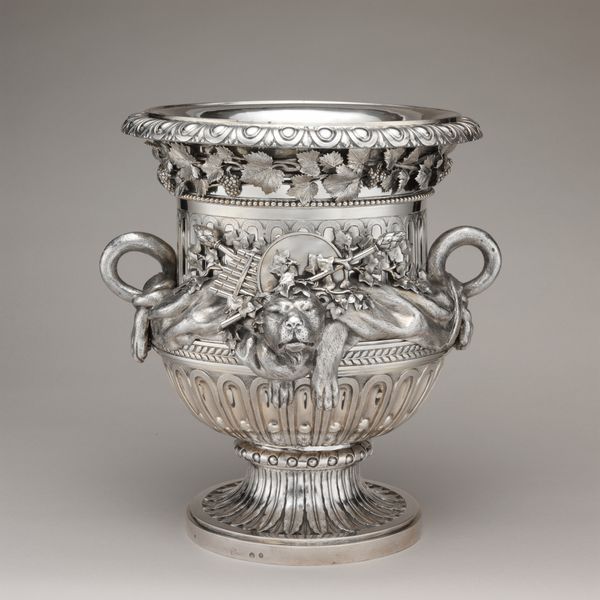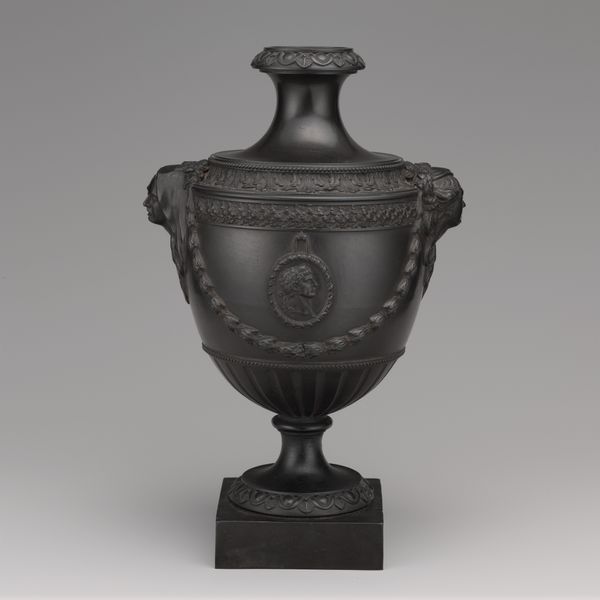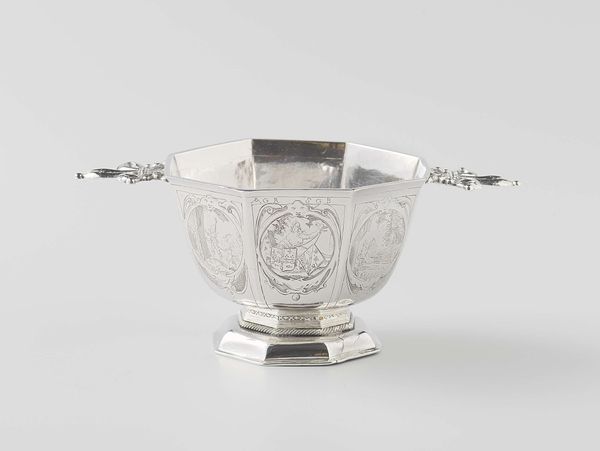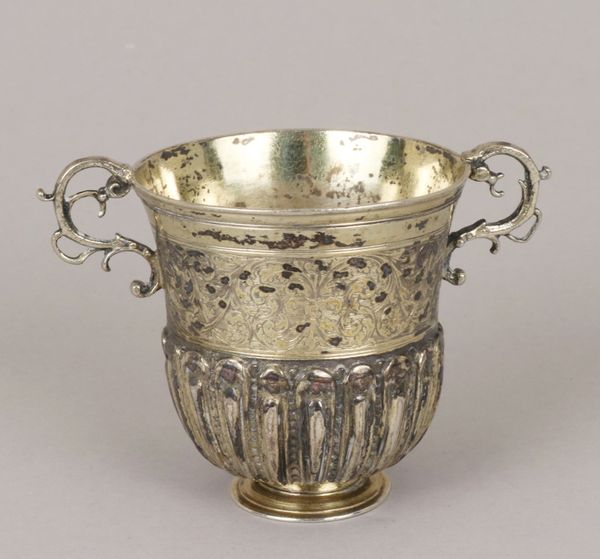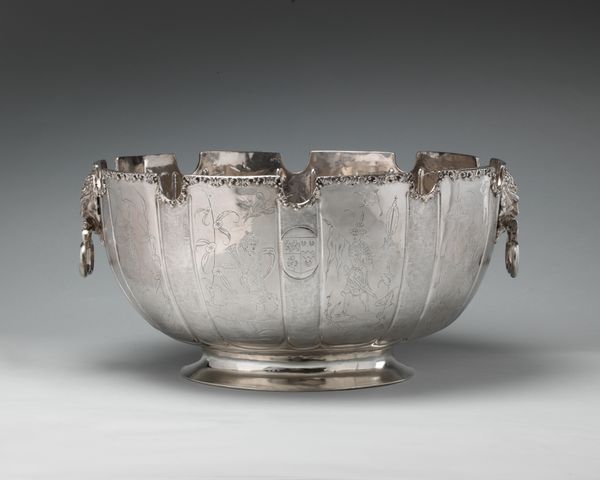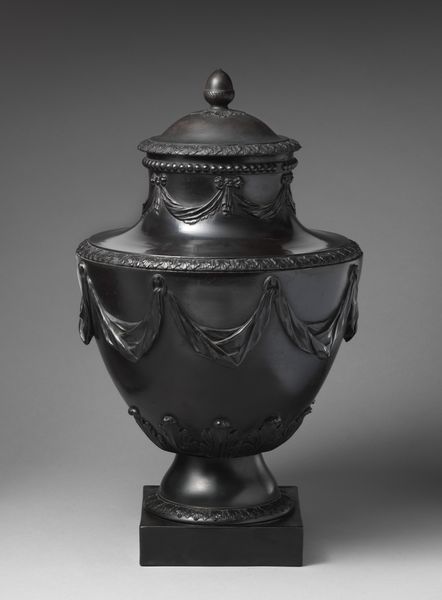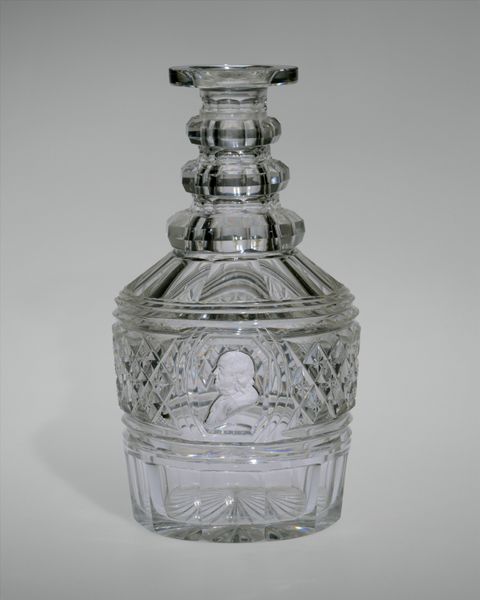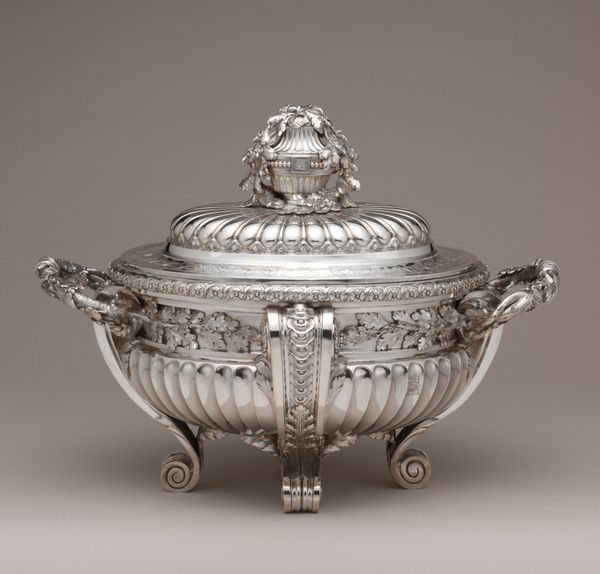
silver, metal, sculpture
#
silver
#
baroque
#
metal
#
geometric
#
sculpture
#
decorative-art
Dimensions: Overall (confirmed): 8 1/4 x 9 3/4 x 7 7/8 in., 121 oz. 18 dwt. (21 x 24.8 x 20 cm, 3.7915kg)
Copyright: Public Domain
Curator: This resplendent object is a silver wine cooler, one of a pair crafted around 1716 or 1717 by the accomplished silversmith, William Lukin I. It’s now part of the Metropolitan Museum of Art's collection. Editor: My first impression is how intensely the surface is worked; the light just dances across all those facets. And look at the weight of it—all that metal must make it incredibly heavy! Curator: The craftsmanship is remarkable, a testament to the silversmithing trade of the period. Imagine the workshops, the apprenticeship systems, the specific tools used to achieve this level of detail. Baroque objects like this were really statements about the economic processes and high levels of consumption happening at the time. Editor: Exactly! Luxury goods like these were tied to the burgeoning merchant classes, and all the geopolitical shifts driving that wealth accumulation. Consider the social hierarchy reflected in who could commission, own, and utilize something so extravagant. Also, note the symbolism—perhaps encoded messages about status, dynastic power, even colonial exploits through its images. Curator: The materiality itself speaks to class. Silver was associated with wealth, power, and refined taste. How did this wine cooler reinforce social standing at the time through formal dinners, performances of civility, or maybe private family moments? The form of this piece isn't accidental, think about its relation to display culture. Editor: I can imagine the object in use at aristocratic parties. We should also question what labour it entailed – not only from the artist, but also from enslaved populations to mine the silver in the first place. That precious metal has a human cost to it. Curator: Absolutely. The conditions and networks required for such opulent creations cannot be separated from their inherent beauty and material ingenuity. It's through exploring those facets that we enrich our understanding of decorative art as something profoundly enmeshed within political and material systems. Editor: Precisely. So, when looking at this object, allow yourself to be struck by its splendor and opulence – while keeping in mind the systems of production and power at work. It's this duality that reveals deeper, perhaps more difficult truths.
Comments
No comments
Be the first to comment and join the conversation on the ultimate creative platform.
